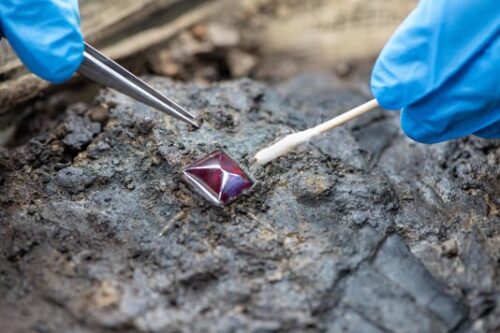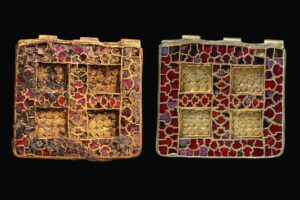
In 2022, archaeologists at a housing development discovered a 1,300-year-old burial near Harpole, a village on the edge of Northampton, U.K. Alongside the presumed remains of a young, high-status woman, the dig has since unveiled a treasure trove of historical jewellery and gems.

The restoration work undertaken by the Museum of London Archaeology (MOLA) has revealed intricate gold work, semi-precious stones, multi-coloured glass, a unique cross, a gemstone necklace, and 30 pendants. Experts say the cross, made of thin sheets of silver attached to wood, resembles pectoral crosses discovered at other high-status female burials. The cross is adorned with a number of garnets and smaller gold crosses.

“Our work on the Harpole Burial has really demonstrated the value of block lifting and micro-excavating these types of features,” says Riva Boutylkova, a conservator at MOLA. “We have been able to find and record details that may have been lost outside of the controlled conditions of the lab. This unlocks a world of possibilities for future research and analysis, which will give us a much richer understanding of this extraordinary find.”
Research into the burial is still ongoing. Archaeologists hope the site will provide further insight into funeral rituals of the time.






